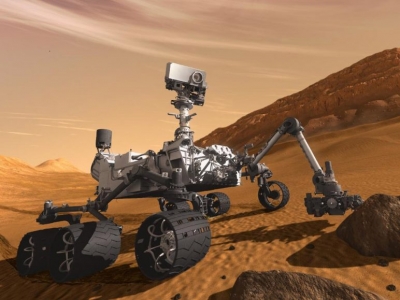
On November 26, 2011 NASA launched Curiosity Mars rover to explore crater Gale on the Red Planet. The rover was tasked to investigate the Martian climate and geology and assess whether the planet could support microbial life. In December 2012, Curiosity’s two-year mission was extended indefinitely. In 2019, it was revealed that Curiosity had detected the largest amount of methane ever measured during its mission on Mars. Scientists are looking for more evidence to find its source, because microbial life is an important source of methane on Earth. However, methane can also be created through interactions between rocks and water.
As established by the Mars Exploration Program, the main scientific goals of the MSL mission are to help determine whether Mars could ever have supported life, as well as determining the role of water, and to study the climate and geology of Mars. The mission results will also help prepare for human exploration.
Picture Credit : Google

